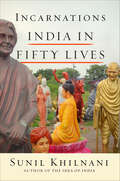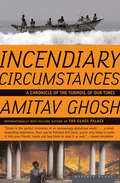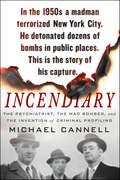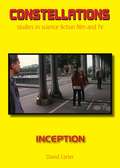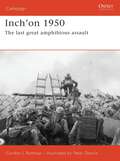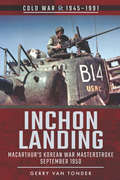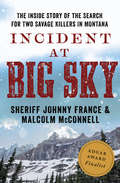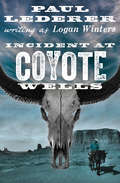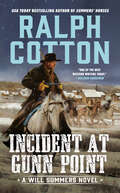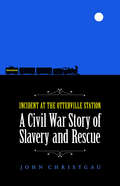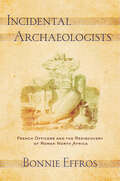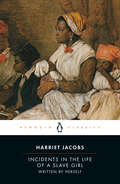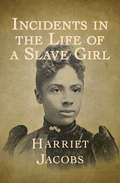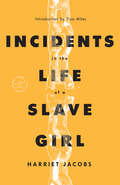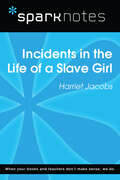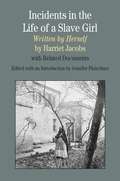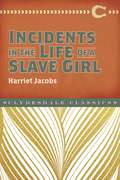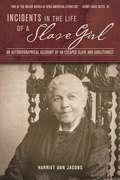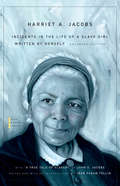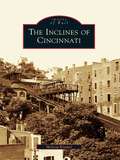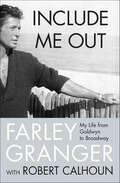- Table View
- List View
Incarnation
by Emma CornwallIn the steampunk world of Victorian London, a beautiful vampire seeks out the author of Dracula-to set the record straight . . . If one is to believe Bram Stoker's legendary vampire tale, Lucy Weston is Dracula's most wanton creation, a sexual creature of the night who preys on innocent boys. But the real-life Lucy is nothing like her fictional counterpart--and she demands to know why the Victorian author deliberately lied. With Stoker's reluctant help, she's determined to track down the very fiend who transformed her--from the sensual underworld where humans vie to become vampires, to a hidden cell beneath a temple to madness, and finally into the glittering Crystal Palace where death reigns supreme. Haunted by fragmentary memories of her lost life and love, Lucy must battle her thirst for blood as she struggles to stop a catastrophic war that will doom vampires and humans alike. Ultimately, she must make a choice that illuminates for her--and for us--what it means to be human.
Incarnations: India in Fifty Lives
by Sunil KhilnaniAn entertaining and provocative account of India’s past, written by one of the country’s leading thinkersFor all India’s myths, its sea of stories and moral epics, Indian history remains a curiously unpeopled place. In Incarnations, Sunil Khilnani fills that space, bringing to life fifty extraordinary men and women who changed both India and the world. Journeying across India in pursuit of their stories—visiting slum temples, ayurvedic call centers, Bollywood studios, textile mills, and Mughal fortresses—Khilnani offers trenchant portraits of emperors, warriors, philosophers, artists, iconoclasts, and entrepreneurs. Some of these historical figures are famous. Some are unjustly forgotten. And all, Khilnani convinces us, are deeply relevant today. As their rich and surprising lives take the reader through twenty-five hundred winding years of Indian and world history, Khilnani brings wit, feeling, historical rigor, and uncommon insight to dilemmas that extend from ancient times to our own.We encounter the Buddha not as the usual beatific icon but as a radical young social critic. We meet the ancient Sanskrit linguist who inspires computer programmers today. We hear the medieval poets, ribald and profound, who mocked rituals and caste and whose voices resonate in contemporary poetry. And we see giants of the twentieth-century Independence movement—among them Mohandas Gandhi; Ambedkar, the Untouchable lawyer turned constitution maker; and the legendary singer M. S. Subbulakshmi—not as cardboard cutouts but as complex and striving human beings. At once a provocative and sophisticated reinterpretation of India’s history and an incisive commentary on its present-day conflicts and struggles, Incarnations is an authoritative, sweeping, and often moving account of a nation coming into its own.
Incendiary Circumstances: A Chronicle of the Turmoil of our Times
by Amitav GhoshA journalist who &“illuminates the human drama behind the headlines&” writes about today&’s dramatic events, from terrorist attacks to tsunamis (Publishers Weekly). &“An uncannily honest writer,&” Amitav Ghosh has published firsthand accounts of pivotal world events in publications including the New York Times, Granta, and the New Yorker (The New York Times Book Review). This volume brings together the finest of these pieces, chronicling the turmoil of our times. Incendiary Circumstances begins with Ghosh&’s arrival in the Andaman and Nicobar Islands just days after the devastation of the 2005 tsunami. We then travel back to September 11, 2001, as Ghosh retrieves his young daughter from school, sick with the knowledge that she must witness the kind of firestorm that has been in the background of his life since childhood. In his travels, Ghosh has stood on an icy mountaintop on the contested border between India and Pakistan; interviewed Pol Pot&’s sister-in-law in Cambodia; shared the elation of Egyptians when Naguib Mahfouz won the Nobel Prize; and stood with his threatened Sikh neighbors through the riots following Indira Gandhi&’s assassination. In these pieces, he offers an up-close look at an era defined by the ravages of politics and nature. &“Ghosh is the perfect chronicler of an increasingly globalized world . . . Reading [him] is a mind-expanding experience. Once you&’ve finished this book, you&’re very likely to press it into your friends&’ hands and beg them to read it as well.&” —Sunday Oregonian
Incendiary: The Psychiatrist, the Mad Bomber, and the Invention of Criminal Profiling
by Michael CannellLong before the specter of terrorism haunted the public imagination, a serial bomber stalked the streets of 1950s New York. The race to catch him would give birth to a new science called criminal profiling.Grand Central, Penn Station, Radio City Music Hall—for almost two decades, no place was safe from the man who signed his anonymous letters “FP” and left his lethal devices in phone booths, storage lockers, even tucked into the plush seats of movie theaters. His victims were left cruelly maimed. Tabloids called him “the greatest individual menace New York City ever faced.” In desperation, Police Captain Howard Finney sought the help of a little known psychiatrist, Dr. James Brussel, whose expertise was the criminal mind. Examining crime scene evidence and the strange wording in the bomber’s letters, he compiled a portrait of the suspect down to the cut of his jacket. But how to put a name to the description? Seymour Berkson—a handsome New York socialite, protégé of William Randolph Hearst, and publisher of the tabloid The Journal-American—joined in pursuit of the Mad Bomber. The three men hatched a brilliant scheme to catch him at his own game. Together, they would capture a monster and change the face of American law enforcement.
Incendios en Highgate Rise (Inspector Thomas Pitt #Volumen 11)
by Anne PerryEn el Londres victoriano, aquel rutilante mundo de elegancia para unos pocos, hipocresía y protocolo formal hasta para ir al retrete, se cometían crímenes como en cualquier otra gran ciudad. La decimoprimera novela de la serie del inspector Pitt Clemency Shaw, la esposa de un prominente doctor, ha muerto en un incendio. Pero el inspector Pitt tiene dudas sobre el origen del mismo, y, junto a su astuta esposa Charlotte, deberá recorrer una intrincada y siniestra red de pistas y personajes que van desde los más bajos fondos hasta los más selectos centros de poder...
Incentivized Development in China
by David J. BulmanChina's economy, as a whole, has developed rapidly over the past 35 years, and yet its richest county is over 100 times richer in per capita terms than its poorest county. To explain this vast variation in development, David J. Bulman investigates the political foundations of local economic growth in China, focusing on the institutional and economic roles of county-level leaders and the career incentives that shape their behaviour. Through a close examination of six counties complemented by unique nation-wide data, he presents and explores two related questions: what is the role of County Party Secretaries in determining local governance and growth outcomes? And why do County Party Secretaries emphasize particular developmental priorities? Suitable for scholars of political economy, development economics, and comparative politics, this original study analyzes the relationship between political institutions, local governance, and leadership roles within Chinese government to explain the growing divergence in economic development between counties.
Inception (Constellations)
by David CarterChristopher Nolan's Inception (2010) is a difficult film to categorize. It partakes of various genres, blurring the distinctions between them. Yes, it is science fiction but it does not contain many of the ingredients associated with that genre. It can also be identified as a kind of heist film, and there are shades of film noir as well, not only because of the heist motifs but also due to its character types. It can also be described as psychological thriller, telling the story of one man's attempt to flee his past and regain access to his family, of his coming to terms with the death of his wife. In addition it plays with time, questioning the certainty of consciously experienced real time, and revealing that the personal experience of the passing of time is variable. The film also explores the nature of the mind and how dreams are related to the conscious and unconscious mind. David Carter's contribution to the Constellation series covers all of these facets of a complex yet highly successful film, as well as considering it in the context of the director's other work.
Inch'on 1950
by Peter Dennis Gordon RottmanOsprey's study of Inch'on, which was probably the most significant campaign in the Korean War (1950-1953), as well as the last major amphibious assault of division-size conducted in the history of warfare. The odds were stacked against the US troops, with virtually no time for training and many of the divisions unprepared for the conflict. The success of the Inch'on campaign is a testament to the sheer initiative of the officers and NCOs conducted it. This book details the strategy and tactics that led to the operation's success, as well as narrating the experience of the battle in fascinating detail.
Inchon Landing: MacArthur's Korean War Masterstroke, September 1950 (Cold War, 1945–1991)
by Gerry van TonderA history of this dramatic and risky amphibious invasion, with photos included. In the previous two volumes in the author&’s series on battles of the Korean War, North Korean ground forces, armor and artillery cross the 38th Parallel into South Korea, inflicting successive ignominious defeats on the ill-prepared US-led UN troops, pushing them ever southward into a tiny defensive enclave—the Pusan Perimeter—on the tip of the Korean Peninsula. The story continues as General Douglas MacArthur, Second World War veteran of the South East Asia and Pacific theaters, meets with considerable resistance to his plans for a counteroffensive, from both Washington and his staff in South Korea and Japan: it is typhoon season, the approaches to the South Korean port city of Inch&’on are not conducive to amphibious assault, and it will leave the besieged Pusan Perimeter in great danger of being overrun. However, the controversial MacArthur&’s obstinate persistence prevails and, with a mere three weeks to go, the US X Corps is activated to execute the invasion on D-Day, September 15, 1950. Elements of the US Marine Corps land successfully on the scheduled day, and with the element of surprise on their side, immediately strike east to Seoul, only fifteen miles away. The next day, General Walker&’s Eighth US Army breaks out of Pusan to complete the southerly envelopment of the North Korean forces. Seoul falls on the 25th. MacArthur&’s impulsive gamble has paid off, and the South Korean government moves back to their capital. The North Koreans have been driven north of the 38th Parallel, effectively bringing to an end their invasion of the south that started on June 25, 1950. With a timeline and photos included, this book tells the compelling story.
Incident at Big Sky: The Inside Story of the Search for Two Savage Killers in Montana
by Malcolm McConnell Sheriff Johnny FranceEdgar Award Finalist: The &“exciting&” true story of the abduction of biathlete Kari Swenson and the five-month manhunt to bring her tormentors to justice (The New York Times Book Review). Former rodeo cowboy Johnny France had been sheriff of Madison County, Montana, for three years when Kari Swenson, a Bozeman resident training for the World Biathlon Championship, went missing near Big Sky Resort in July 1984. Her friends feared that Kari had been attacked by a grizzly bear, but the truth was far scarier: She&’d been kidnapped at gunpoint by father-and-son survivalists Don and Dan Nichols. The pair had been living in the wilderness off and on for years and hoped to make Kari a &“mountain woman&” and Dan&’s bride. But the plan went horribly wrong from the start, and after a deadly firefight with rescuers, the kidnappers vanished into the rugged terrain of the Spanish Peaks. As Montana&’s summer froze into brutal winter blizzards, SWAT teams, forest rangers, and antiterrorist units searched the backcountry but sighted the mountain men only once. Then came the call about a strange campfire on a slope above the Madison River. Sheriff France decided to go into the forest to face the fugitives—alone. The resulting showdown made him &“perhaps the most famous Western sheriff since Wyatt Earp . . . a modern legend&” (Chicago Tribune). Incident at Big Sky is an &“amazing . . . exciting retelling of a modern crime&” that made headlines around the world (The New York Times Book Review). In a voice as distinctive and compelling as the Montana landscape, France takes readers on a high-stakes adventure so bizarre and unforgettable it could only be true.
Incident at Coyote Wells
by Paul LedererIn the barren Sonora desert, a thirsty drifter makes a promise to a dying manFresh out of jail, John Magadan sets out for the oasis of Coyote Wells. When he finds the spring dried up, he knows he will likely die. He trudges on, and hears a voice calling from the sands—a gutshot man pleading for water that John does not have to give. The man presses silver into John&’s hand, begging him to take it to Yuma, to tell his sweetheart how he died. John agrees, even though he sees no chance of making it there alive.Soon after he rides on, John&’s horse gives out, sending him crashing to the ground unconscious. When he comes to, he&’s in an unfamiliar place, being interrogated by men who suspect him of killing the man in the desert. Killers, lawmen, and Yaqui Indians all want John Magadan&’s hide. He survived the desert, but the trip to Yuma will be deadly.
Incident at Gunn Point
by Ralph CottonHorse trader Will Summers wasn't looking to be anybody's hero, let alone stop a bank robbery led by the son of Gunn Point's most powerful man. He'd rather hit the trail than try to take on the rest of the robbers, who are hell-bent on skinning his hide. But when the local sheriff is injured and his deputy outmatched, Will knows that things are only going to get worse. With an enigmatic gunhand as his only ally, Will is going to have to outshoot--and outwit--a gang of vengeful cutthroats if he wants to make it out of Gunn Point alive. . .
Incident at the Otterville Station: A Civil War Story of Slavery and Rescue
by John ChristgauWhile elated Northerners were celebrating victory at Gettysburg and toasting Abraham Lincoln as the Great Emancipator, Missourian Charles W. Walker was rousing his thirteen slaves in the dark of night. In defiance of a standing Union order prohibiting the transfer of slaves among states, he intended to ship his slaves by train to Kentucky, where they would be sold at auction. What ensued was one of the most gripping—and until now, mostly forgotten—events of the Civil War.In Incident at the Otterville Station, John Christgau relates the true story of the rescue of Walker’s thirteen slaves by soldiers of the Ninth Minnesota Regiment and the soldiers’ subsequent arrest for mutiny. The controversial incident became national news, with President Lincoln ultimately sending Secretary of War Edward Stanton to investigate. Christgau’s compelling narrative of the Otterville Station rescue and its aftermath illustrates the complex process of emancipation during the American Civil War, particularly in border states such as Missouri. The end of slavery was the product of many actors, from Union soldiers to the president and Congress to abolitionists and the enslaved themselves. This detailed account examines the critical role that individuals played in determining the outcome of emancipation and the war.
Incidental Archaeologists: French Officers and the Rediscovery of Roman North Africa
by Bonnie EffrosIn Incidental Archaeologists, Bonnie Effros examines the archaeological contributions of nineteenth-century French military officers, who, raised on classical accounts of warfare and often trained as cartographers, developed an interest in the Roman remains they encountered when commissioned in the colony of Algeria. By linking the study of the Roman past to French triumphant narratives of the conquest and occupation of the Maghreb, Effros demonstrates how Roman archaeology in the forty years following the conquest of the Ottoman Regencies of Algiers and Constantine in the 1830s helped lay the groundwork for the creation of a new identity for French military and civilian settlers.Effros uses France's violent colonial war, its efforts to document the ancient Roman past, and its brutal treatment of the region's Arab and Berber inhabitants to underline the close entanglement of knowledge production with European imperialism. Significantly, Incidental Archaeologists shows how the French experience in Algeria contributed to the professionalization of archaeology in metropolitan France.Effros demonstrates how the archaeological expeditions undertaken by the French in Algeria and the documentation they collected of ancient Roman military accomplishments reflected French confidence that they would learn from Rome's technological accomplishments and succeed, where the Romans had failed, in mastering the region.
Incidents in the Life of a Blind Girl
by Mary L. DayOrphaned at ten and blinded at twelve, Mary L. Day eventually studied at the Maryland Institute for the Blind and wrote this memoir in her early twenties. She describes her ordeals at the hands of doctors who attempted to restore her sight, her solo travels by train, and her education with other blind students. Although her book is laced with Victorian poetry and pathos, much of Mary's story still rings true today.
Incidents in the Life of a Slave Girl
by Harriet Jacobs Nell Irvin PainterA haunting, evocative recounting of her life as a slave in North Carolina and of her final escape and emancipation, Harriet Jacobs's classic narrative, written between 1853 and 1858 and published pseduonymously in 1861, tells firsthand of the horrors inflicted on slaves. In writing this extraordinary memoir, which culminates in the seven years she spent hiding in a crawl space in her grandmother's attic, Jacobs skillfully used the literary genres of her time, presenting a thoroughly feminist narrative that portrays the evils and traumas of slavery, particularly for women and children.
Incidents in the Life of a Slave Girl (Enriched Classics)
by Harriet JacobsTormented by her master, a young mother plots a daring escape, in this courageous and captivating slave narrative When her mother dies, six-year-old slave girl Linda Brent is sent to the big house, where she grows up serving a gentle mistress who teaches her to read and write. But the mistress&’s death brings about a sudden and terrible change in Linda&’s fortunes. Her lecherous new master torments Linda mercilessly, making her life a living hell. Unable to join her two young children in their escape to the North, Linda hides in the attic above her grandmother&’s house. For seven years, she waits for the opportunity to flee North Carolina and reunite with her son and daughter in the land of freedom. But when the chance finally comes, Linda discovers she has yet more pain to endure. Based on the true story of Harriet Jacobs&’s escape from the South, Incidents in the Life of a Slave Girl is one of American literature&’s most powerful indictments of the evils of slavery. This ebook has been professionally proofread to ensure accuracy and readability on all devices.
Incidents in the Life of a Slave Girl (Modern Library Torchbearers)
by Harriet JacobsThe unflinching nineteenth-century autobiography that broke the silence on the psychosexual exploitation of Black women—with an introduction by Tiya Miles, recipient of a MacArthur &“genius&” grant&“[A] crowning achievement . . . [Jacobs] remodeled the forms of the black slave narrative and the white female sentimental novel to create a new literary form—a narrative at once black and female.&” —Henry Louis Gates, Jr., The New York Times In clear and unshrinking prose, Harriet Jacobs—writing under the pseudonym Linda Brent—relates the story of her girlhood and adolescence as a slave in North Carolina and her eventual escape: a bildungsroman set in the complex terrain of a chauvinist, white supremacist society. Resolutely addressing women readers, rather than men, Incidents in the Life of a Slave Girl seeks to make white women understand how the threat of sexual violence shapes the lives of enslaved Black women and children. Equal parts brave and searing, Incidents in the Life of a Slave Girl is a triumph of American literature.The Modern Library Torchbearers series features women who wrote on their own terms, with boldness, creativity, and a spirit of resistance.AMERICAN INDIAN STORIES • THE AWAKENING • THE CUSTOM OF THE COUNTRY • THE HEADS OF CERBERUS • LADY AUDLEY&’S SECRET • LOVE, ANGER, MADNESS • PASSING • THE RETURN OF THE SOLDIER • THERE IS CONFUSION • THE TRANSFORMATION OF PHILIP JETTAN • VILLETTE
Incidents in the Life of a Slave Girl (SparkNotes Literature Guide Series)
by SparkNotesIncidents in the Life of a Slave Girl (SparkNotes Literature Guide) by Harriet Jacobs Making the reading experience fun! Created by Harvard students for students everywhere, SparkNotes is a new breed of study guide: smarter, better, faster. Geared to what today's students need to know, SparkNotes provides: *Chapter-by-chapter analysis *Explanations of key themes, motifs, and symbols *A review quiz and essay topicsLively and accessible, these guides are perfect for late-night studying and writing papers
Incidents in the Life of a Slave Girl, Written by Herself: With Related Documents
by Harriet JacobsDespite being born into slavery, Linda Brent enjoys a happy childhood—until the deaths of her parents and kind mistress leave her an orphan and the property of the lascivious Dr. Flint. Linda becomes the target of his unwanted advances, which she temporarily evades by bearing the children of another man. But when Dr. Flint threatens to sell her children unless she submits, Linda hatches a desperate plan to escape, working to secure her children’s freedom as well as her own. <P><P> Using the character Linda Brent to narrate her own life story, Harriet Ann Jacobs reveals the unparalleled struggles of an enslaved woman. Her harrowing account of perseverance and unimaginable bravery continues to enlighten and inspire to this day. <P><P>
Incidents in the Life of a Slave Girl: An Autobiographical Account Of An Escaped Slave And Abolitionist (Clydesdale Classics)
by Harriet Ann JacobsPackaged in handsome, affordable trade editions, Clydesdale Classics is a new series of essential literary works. It features literary phenomena with influence and themes so great that, after their publication, they changed literature forever. From the musings of literary geniuses like Mark Twain in The Adventures of Huckleberry Finn to the striking personal narrative of Solomon Northup in Twelve Years a Slave, this new series is a comprehensive collection of our history through the words of the exceptional few.One of the only surviving female slave narratives from the twentieth century, Incidents in the Life of a Slave Girl is an autobiographical account written by Harriet Jacobs. The narrative documents the extreme adversity she overcame before she eventually achieved her freedom. Born into slavery, young Harriet was taken into the care of her mother’s mistress, who treated her relatively well. However, a few years later, the mistress passed away and her cruel, abusive relatives inherited Harriet.Under the pseudonym "Linda Brent,” Jacobs recounts within the book the horrific injustices she encountered: sexual abuse, extreme cruelty, exploitation, being denied motherhood when her children are sold to another slave owner. In Incidents in the Life of a Slave Girl, Harriet’s agonizing descriptions are indicative of what many other enslaved African American women suffered through during this tragic time in American history.Published in 1861, just on the brink of the Civil War, Incidents in the Life of a Slave Girl is a harrowing literary work bringing to light the courage, empowerment, and perseverance a young slave found in her desperate search for freedom.
Incidents in the Life of a Slave Girl: An Autobiographical Account of an Escaped Slave and Abolitionist
by Harriet Ann JacobsAfter hiding in her grandmother’s attic for seven years, Harriet Ann Jacobs was finally able to escape servitude—and her master’s sexual abuse—when she fled to the North. Once there, she became a very active abolitionist, and her correspondence with Harriet Beecher Stowe inspired her to write Incidents in the Life of a Slave Girl about her years as a slave. She published the narrative in 1861 under the pseudonym Linda Brent, and the book was written as a novel with fictionalized characters to protect Jacobs from retribution by her former owners. (Dr. Flint, i. e. , the real Dr. James Norcom, is Linda Brent’s master in the novel. ) The story emphasized certain negative aspects of slavery—especially the struggles of female slaves under sexually abusive masters, cruel mistresses, and the sale of their children—in order to play on the sympathies of white middle-class women in the North. Incidents in the Life of a Slave Girl was published at the beginning of the American Civil War. It contributed to the Union’s and abolitionists’ war effort, but is today seen as an important first-hand account from an escaped slave woman and an important abolitionist. After the Civil War, Jacobs continued to support the African-American cause, particularly education, until her death in 1897.
Incidents in the Life of a Slave Girl: Written by Herself, with “A True Tale of Slavery” by John S. Jacobs (The John Harvard Library #119)
by Harriet A.; Jacobs; JacobsThis enlarged edition of the most significant and celebrated slave narrative completes the Jacobs family saga, surely one of the most memorable in all of American history. John S. Jacobs’s short slave narrative, A True Tale of Slavery, published in London in 1861, adds a brother’s perspective to Harriet A. Jacobs’s autobiography. It is an exciting addition to this now classic work, as John Jacobs presents further historical information about family life so well described already by his sister. Once more, Jean Fagan Yellin, who discovered this long-lost document, supplies annotation and authentication. This is the standard edition of Incidents in the Life of a Slave Girl, reissued here in the John Harvard Library and updated with a new bibliography.
Inclines of Cincinnati, The
by Melissa KramerOn a summer evening, the overlook at the Rookwood Pottery in Mount Adams will be visited by at least a few, as it is one of the most romantic and fascinating hilltop vantage points in Cincinnati. One hundred years ago, though, this was the place to see and be seen. The fashionable Highland House, a world-class entertainment complex, put Cincinnati on the cultural map, and the city became known as "the Paris of America." Every weekend, crowds of thousands of hardworking Cincinnatians watched their worries disappear as the streets grew smaller, the city came into focus, and they were lifted on the Mount Adams Incline toward the Highland House and the promise of a cool drink, a good meal, and a night of dancing under the stars. At one time, five of these hillside railroads carried Cincinnati citizens and tourists alike to the peaks of Mount Adams, Mount Auburn, Clifton, and Price Hill. When were the inclines built? Why did they disappear? And why were none of them saved? The Inclines of Cincinnati examines these questions through historic images, some never before published, of the inclines and their hilltop resorts.
Include Me Out: My Life from Goldwyn to Broadway
by Farley Granger Robert CalhounThe star of Hitchcock’s Rope and Strangers on a Train “recalls life onstage and in film in an engaging, colorful memoir” (Kirkus Reviews, starred review).Synonymous with the golden age of Broadway, the dazzling lights of Hollywood, and the rise of television arts, Farley Granger’s charm and talent captivated the acting community and audiences alike. Working with creative visionaries like Alfred Hitchcock, Luchino Visconti, and Nick Ray, Granger was a celebrated figure in films like Strangers on a Train, Rope, Senso, and They Live by Night, bringing to the big screen a stunningly memorable presence.But behind his characters, he was an intensely complex man. In his richly told memoir, Granger details his life with disarming candor. Rich in personal insight, he describes his relationships with both men and women and reminisces about legends he knew with private familiarity—from Shelley Winters and Joan Crawford to Leonard Bernstein and Tyrone Power.Recreating not only his personal struggles but his legendary struggle to free himself of his contract with Sam Goldwyn, Granger reveals none so elegantly as he does himself. Include Me Out is as much a story of classic Hollywood glamour as it is a collection of iconic theatrical portraits, all from the man who knew them all.“This polished and perceptive memoir etches a scintillating portrait of life inside Tinseltown soundstages where ‘nothing was real except anxiety, insecurity and fear’ . . . The book has a huge celebrity cast, from Mike Todd, Rita Hayworth and Cornelia Otis Skinner to Leonard Bernstein and Peggy Guggenheim. Granger and Calhoun write with a stylish and iridescent flair.” —Publishers Weekly

